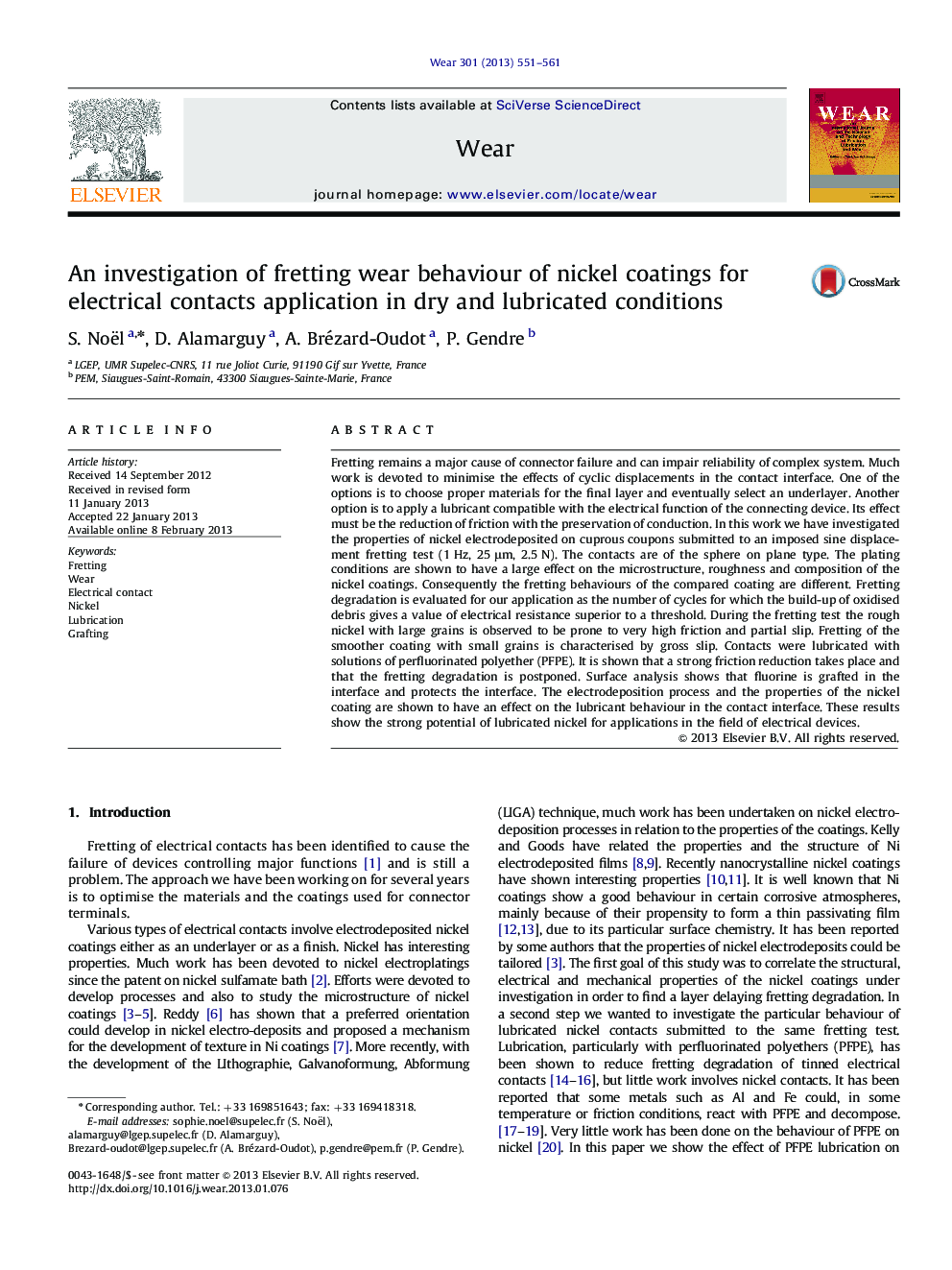| Article ID | Journal | Published Year | Pages | File Type |
|---|---|---|---|---|
| 617564 | Wear | 2013 | 11 Pages |
Abstract
Fretting remains a major cause of connector failure and can impair reliability of complex system. Much work is devoted to minimise the effects of cyclic displacements in the contact interface. One of the options is to choose proper materials for the final layer and eventually select an underlayer. Another option is to apply a lubricant compatible with the electrical function of the connecting device. Its effect must be the reduction of friction with the preservation of conduction. In this work we have investigated the properties of nickel electrodeposited on cuprous coupons submitted to an imposed sine displacement fretting test (1 Hz, 25 μm, 2.5 N). The contacts are of the sphere on plane type. The plating conditions are shown to have a large effect on the microstructure, roughness and composition of the nickel coatings. Consequently the fretting behaviours of the compared coating are different. Fretting degradation is evaluated for our application as the number of cycles for which the build-up of oxidised debris gives a value of electrical resistance superior to a threshold. During the fretting test the rough nickel with large grains is observed to be prone to very high friction and partial slip. Fretting of the smoother coating with small grains is characterised by gross slip. Contacts were lubricated with solutions of perfluorinated polyether (PFPE). It is shown that a strong friction reduction takes place and that the fretting degradation is postponed. Surface analysis shows that fluorine is grafted in the interface and protects the interface. The electrodeposition process and the properties of the nickel coating are shown to have an effect on the lubricant behaviour in the contact interface. These results show the strong potential of lubricated nickel for applications in the field of electrical devices.
Related Topics
Physical Sciences and Engineering
Chemical Engineering
Colloid and Surface Chemistry
Authors
S. Noël, D. Alamarguy, A. Brézard-Oudot, P. Gendre,
